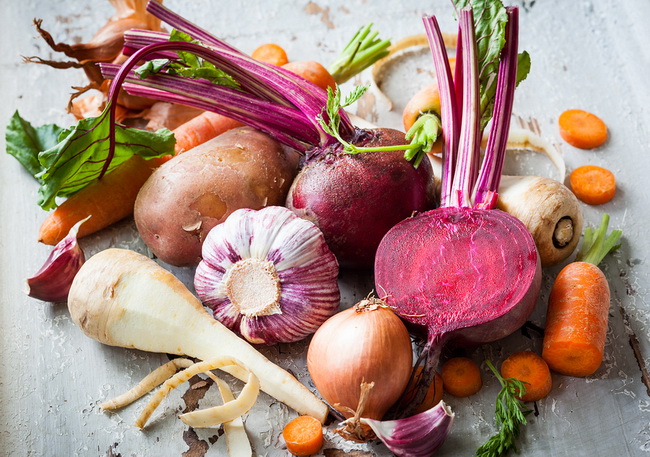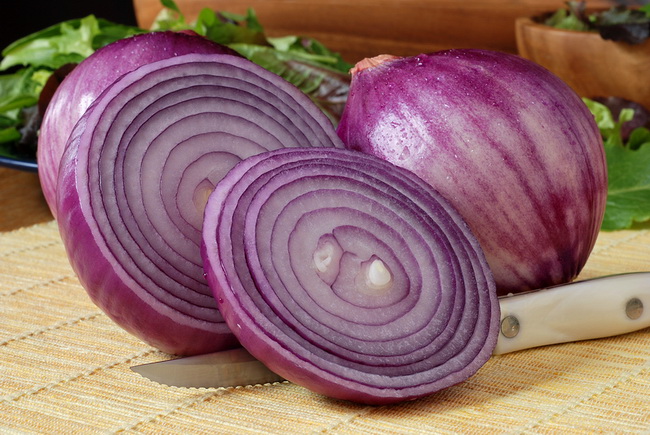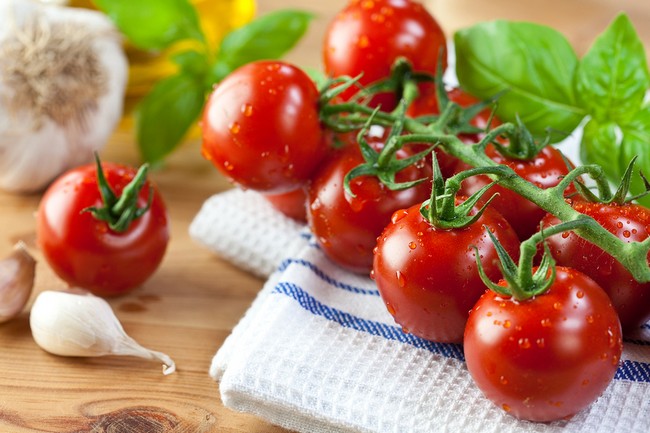- Make It Yourself Lavender Heart-Shaped Bath Bombs!
- 20 Things You Never Knew About “Down There”
- 12 Best Foods For Those Suffering From Arthritis Pain
- 12 Personal Hygiene Mistakes Almost Everyone Makes (Mom Never Told You About #4!)
- 15 Medicinal Plants And Herbs From The Cherokee People
- 12 Mind-Blowing Benefits Of Drinking Coconut Water During Pregnancy
- 12 Outstanding Winter Foods That Won’t Fatten You Up Like A Christmas Turkey
15 Mind Blowing Veggies You Need to Eat More Of (# 6 is So Good!)

Photo credit: bigstock.com
Everybody knows that eating fresher, organic vegetables is the single most important dietary change you can make to reduce your risk of all kinds of health problems, including cancer, as well as improve your overall health and well-being.
You have most likely also heard that you should eat a rainbow of colors when it comes to fruits and vegetables (although we are only going to talk about vegetables this time). Have you ever really walked through your supermarket picturing a rainbow as you shop? Probably not. And even though all vegetables have their good points and plenty of nutrition, some of them just stand head and shoulders above the rest.
So take a look at the top 15 veggies that will give you that rainbow of color thing you are looking for as well as giving your body that “cherry on top,” so to speak, when it comes to nutrition. Maybe we should say the “cherry tomato” on top since this is, after all, a list about veggies!
1. Celery
This is perhaps one of the most underrated veggies in America. Many people instantly think of rabbit food or think celery is something you only use in tuna salad, but celery is loaded with phytochemicals called phthalides. Studies have shown the eating plenty of phthalides decrease the levels of stress hormones in the body, which will reduce the stiffness in artery walls, improving blood flow. Celery has been used for thousands of years in Chinese medicine to help control blood pressure.
Celery is a great choice for those looking to lose weight, as you will probably burn more calories chomping on it than this vegetable contains, and that’s not a bad thing. It also is a great source of dietary fiber, folates, vitamin K, and B6. So yes, it is good in tuna salad, but you can also dip some in your guacamole, use it in stir fry, add a handful to casseroles or soups, dip it in cottage cheese or yogurt, or, the all-time favorite – smear it with some nut butter.
2. Beet Greens
Do you like beets but regularly cut off the green tops? Well, you won’t after this! Beet tops are simply brimming with vitamin K, which has been linked to a lower risk of developing diabetes. Just one cup of these greens will give you double your daily requirement of this vitamin. You can add them to soup, pasta, rice, or frittata dishes. Or, for a nice change of pace, sauté a bunch of young, tender greens with a bit of olive oil and fresh garlic for a super tasty, and super healthy, side dish. The younger the greens the softer they are, so get ‘em while they’re young!
3. Beets
No root is going to be outdone by its tops, and beets are no exception! Beautiful, ruby-red beets are a great source of nitrates, which are good for those who want to keep their blood pressure under control. On top of this, you get tons of other nutrition and healthy fiber which is known to lower your risk of stomach and colorectal cancer. Try roasting beets to bring out their natural sweetness. Always buy organic beets, however, as many sugar beets on the market today are GM products.
Continue to Page 2

Photo credit: bigstock.com
4. Red Onions
With tons of thiamine, folates, potassium, vitamin C, and B6, combined with fiber and starches that the body cannot completely digest (which makes them prebiotics), sweet red onions contain quercetin, flavonoids, and anthocyanins that can’t be beat when it comes to nutrition. In fact, studies done in China showed that men who consume high levels of foods from the onion family, including chives, garlic, and leeks, have lower risks of prostate cancer. Vitamin C is a must for improving the immune system, and with anti-inflammatory and antioxidants compounds, this veggie is super healthy for your heart. Although best eaten raw, you can still get benefits when lightly cooked so add them to your salads, veggie dishes, burgers, soups, and stir fry.
5. Eggplants
That deep, dark purple color comes from a flavonoid called nasunin, which is a powerful antioxidant that can protect us on a cellular level from the damage caused by free radicals. Eggplants are also known to help protect and improve the functioning of the central nervous system. If you have never tried eggplants, you are in for a treat. Try a recipe online and once you eat them, you will find you actually crave them!
6. Microgreens
Microgreens are living proof that great things come in small packages. You can buy baby versions of many vegetables, such as broccoli, cabbage, kale, and radishes that are often higher in nutrients, such as vitamins E and C, than their full-sized versions. They are super tasty, packing all the flavor of a mature plant into a mini-me version. You can add them to anything the same way you would the full size version such as soups, stir fry, sandwiches, salads, or all by their tasty selves!
Continue to Page 3

Photo credit: bigstock.com
7. Winter Squash
So versatile, so many colors, and so healthy for you! Winter squash is loaded with carotenoid phytonutrients, which are what gives squash their beautiful colors as well as their health benefits including potent anti-inflammatory and antioxidant capabilities. The most popular types of squash, such as acorn, butternut, and spaghetti squash, along with the Japanese squash, Kabocha, and pumpkins, can be used in so many ways, it’s hard to list them here. Everything from pasta substitutes to pies, soups to side dishes – there is no end to the versatility of squash. Try eating at least one every week!
8. Watercress
If you thought watercress was like iceberg lettuce, full of water, think again! This green packs a peppery punch that beats the heck out of arugula. This veggie is super rich in vitamins A, K, and C, all of which are important for a strong immune system. It also has plenty of antioxidants, which are known to fight free radicals, which cause premature aging. Watercress can turn a plain salad or sandwich into something fresh and flavorful.
9. Red and Yellow Bell Peppers
Funny things about peppers: we all think of them as vegetables, but they are actually a fruit. Regardless, one medium-sized bell pepper packs a powerful nutritional punch with more than twice of your daily requirement of vitamin C, beta carotene, and B vitamins. These are super versatile as well, so add them to a salad for a crispy, peppery crunch, roasted with garlic for a great side dish, or cut up and added to soups and casseroles.
Continue to Page 4

Photo credit: bigstock.com
10. Tomatoes
That beautiful red color in tomatoes comes from a carotenoid called lycopene, which has been well-documented as lowering the risk of heart disease, certain types of cancer, and cataracts. They are also a great source of other nutrients such as vitamin K, C, and A, as well as biotin, which helps the body maintain a normal blood sugar level as well as for proper metabolism and energy.
11. Swiss Chard
There are two main types of Swiss chard: the white stems and the multicolored stems, sometimes referred to as Rainbow chard. Both are terrific sources of lutein and zeaxanthin, an antioxidant duo that is great for eye health. At a mere 7 calories a cup, these greens are good for your middle in more ways than one. If you have never tried it, use the leaves in place of tortillas when making quesadillas or soft tacos. You can also lightly steam Swiss chard and toss it with a bit of vinaigrette for a super salad!
12. Broccoli
The celebrity of the vegetable world. Everyone knows what it is and what it can do. This is one of the top vegetables when it comes to lowering the risk of developing many different types of cancer. One cup of broccoli gives you plenty of vitamins, such as C and K, along with tons of healthy cancer-fighting fiber. Don’t forget to eat the stem! It’s also loaded with nutrients and fiber. Cut it into small pieces and steam it to make it softer.
Continue to Page 5

Photo credit: bigstock.com
13. Sweet Potatoes
Sweet potatoes are a great change from regular potatoes and have much higher amounts of beta-carotene and other antioxidants. These tasty root vegetables are also full of vitamins C and A, along with vitamin B6 and potassium, as well as healthy fiber. Who doesn’t love sweet potatoes? These vegetables are super kid friendly, too, so don’t wait until Thanksgiving to make up some super nutrition-filled sweet potatoes!
14. Spinach
Popeye knew a good thing when he saw it! Spinach is loaded with healthy immune boosting vitamins such as K, A, and C, as well as healthy levels of manganese. Consuming about1.5 cups of this leafy green into your daily diet can lower your risk of developing diabetes, according to several studies.
SEE ALSO: Want Super Health? Eat Plenty of These Two Common Veggies
15. Cauliflower
Well, white isn’t really a part of the rainbow, but this cousin to broccoli is still a super nutrient-dense food. One cup of this white beauty has more fiber than a potato and more vitamin C than an orange! This versatile veggie is also a great source of folates, which are important for growth and the healthy division of cells in the body. Try mashing some boiled cauliflower and see if your family can tell the difference between that and mashed potatoes. Bet they can’t!
Special Mention:
Mushrooms are not technically a vegetable, but they are so healthy they do deserve special mention. Just one serving of mushrooms (about 100 grams) has more than 20 percent of your recommended intake of all B vitamins, selenium, copper, and biotin. They also contain B12 on the surface, which is extremely important for vegans, as they are the only non-animal source of this important vitamin. All mushrooms contain various and unique compounds that protect the body from several types of cancer including breast and prostate cancer. In fact, research shows that women who ate 10 grams of mushrooms or more daily had a reduced risk of developing breast cancer by as much as 60 percent!
References:
































